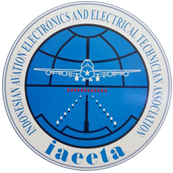HELICOPTER PROCEDURE DESIGN FOR AIR TRAFFIC MOVEMENT IMPROVEMENT: A CASE OF KERTAJATI INTERNATIONAL AIRPORT
DOI:
https://doi.org/10.52989/jaet.v4i2.152Keywords:
air traffic movement, aviation safety, helicopter procedures, instrument flight rules, kertajati airportAbstract
A review of Aeronautical Information Publication Indonesia Volume II indicates a critical infrastructure deficiency at Kertajati International Airport. The absence of a designated helipad presents a significant obstacle for air traffic controllers. This research proposed helicopter procedures designed for instrument flight rules to improve air traffic movement at Kertajati International Airport. A qualitative approach using interviews and document analysis was employed. The research identified a critical omission: the absence of designated helicopter take-off and landing locations. This lack of a framework hinders safe and efficient traffic management. The proposed procedure addresses this challenge by providing a structured approach for managing mixed rotary-wing and fixed-wing traffic, potentially reducing human error and delays, and fostering informed decision-making by air traffic controllers.
Downloads
References
References
Apostolacos, S., Manousos, M., Meliones, A., Kavadas, D., Lykakis, G., Manousarides, A., Kardaris, M., & Simeakis, K. (2008). Design and implementation of a solution for the provisioning of converged remote tower and facility management services over satellite IP for Greek heliports. IEEE Communications Magazine, 46(8), 48–56. https://doi.org/10.1109/MCOM.2008.4597104
Berbaum, K. S., Kennedy, R. S., & Hettinger, L. J. (1991). Visual tasks in helicopter shipboard landing. Applied Ergonomics, 22(4), 231–239. https://doi.org/10.1016/0003-6870(91)90226-8
Braun, V., & Clarke, V. (2006). Using Thematic Analysis in Psychology. Applied Qualitative Research in Psychology, 03(2), 77–101. https://doi.org/10.1057/978-1-137-35913-1
Creswell, J. W., & Báez, J. C. (2021). 30 ESSENTIAL SKILLS FOR THE QUALITATIVE RESEARCHER Second Edition.
Directorate General of Civil Aviation. (2016). AIP Indonesia (Vol. II) Ad 0.4-1 International Aerodromes (Vol. 2, Issue 1).
Direktur Jendral Perhubungan Udara. (2010). Civil Aviation Safety Regulation (CASR) Part 91.
Gonzaga Lopez, C. (2021). Design of Rotorcraft Performance-Based Navigation Routes and Procedures: Current Challenges and Prospects. Journal of Aviation Technology and Engineering, 10(1), 2. https://doi.org/10.7771/2159-6670.1217
Halbe, O., Hamers, M., Lüken, T., & Schmerwitz, S. (2021). Flight evaluation of helicopter curved point-in-space approach procedures. Journal of Air Transportation, 29(2), 80–92. https://doi.org/10.2514/1.D0210
Haverdings, H. (2008). Evaluation of a steep curved rotorcraft IFR procedure in a helicopter-ATC integrated simulation test. 34th European Rotorcraft Forum 2008, ERF34, 2(September 2008), 946–986.
Hünemohr, D., Litzba, J., & Rahimi, F. (2022). Usage Monitoring of Helicopter Gearboxes with ADS-B Flight Data. Aerospace, 9(11). https://doi.org/10.3390/aerospace9110647
McFadden, J. G. (1970). The Impact of Helicopter Operations on Air Traffic Control in the 1970’s. Navigation, 17(3), 246–252. https://doi.org/10.1002/j.2161-4296.1970.tb00046.x
Rollet, P., Authesserre, M., & Sandri, F. (2008). Flight testing of rotorcraft IFR steep approaches using SBAS and GBAS guidance. Annual Forum Proceedings - AHS International, 3(August), 1920–1931.
Volpe, J. A., Transportation, N., & Systems, E. (2011). Helicopter Fuel Burn Modeling in AEDT.
Whitehouse, G. R., & Brown, R. E. (2003). Modeling the mutual distortions of interacting helicopter and aircraft wakes. Journal of Aircraft, 40(3), 440–449. https://doi.org/10.2514/2.3139
Yin, J., & Buchholz, H. (2007). Toward noise abatement flight procedure design: DLR rotorcraft noise ground footprints model. Journal of the American Helicopter Society, 52(2), 90–98. https://doi.org/10.4050/JAHS.52.90
Downloads
Published
How to Cite
Issue
Section
License
Copyright (c) 2024 Diko Bagus Sugiarto, Togi Adnan Maruli Sinaga, Dedy Fachrudin, Rini Sadiatmi, Endang Sugih Arti, Elfi Amir

This work is licensed under a Creative Commons Attribution-NonCommercial 4.0 International License.












_1.png)




